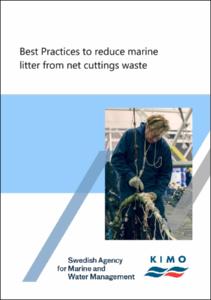Best Practices to reduce marine litter from net cuttings waste.

View/
Average rating
votes
Date
2020Author
Metcalfe, Ryan
Bentley, Arabelle
Status
PublishedPages
41pp.
Metadata
Show full item recordAbstract
The primary source of net cuttings in the North Sea is from trawl nets
that are being repaired on board fishing vessels at sea and on the
quayside in port. Sections of net that have been damaged through
regular wear and tear or by accident are cut from the net and
discarded, through lack of awareness, habit or carelessness. If they are
not removed quickly from the deck of the vessel they can be washed
overboard by storms, high winds, waves or rainwater, or swept
overboard (by design or accident) when the deck is cleaned. If they are
not removed from docks and quaysides they can be carried to the sea
by wind or runoff water (storm drains or directly over the edge), or
swept into the sea during clean-up activities.
Net cuttings can also fall onto the fishing nets on board and be
trapped there, dropping into the sea when the net is rolled up on the
boat or rolled out during regular fishing activities. They can also fall
into the water when nets are transferred from the quay .....
Resource URL
https://www.kimointernational.org/Publisher
KIMO International for Swedish Agency for Marine and Water ManagementShetland, UK
Document Language
enSustainable Development Goals (SDG)
14.1Essential Ocean Variables (EOV)
Marine debrisSpatial Coverage
EuropeanCitation
Metcalfe, R. and Bentley, A. (2020) Best Practices to reduce marine litter from net cuttings waste. Shetland, UK, KIMO International for Swedish Agency for Marine and W ater Management, 41pp. DOI: http://dx.doi.org/10.25607/OBP-1652Collections
 Repository of community practices in Ocean Research, Applications and Data/Information Management
Repository of community practices in Ocean Research, Applications and Data/Information Management